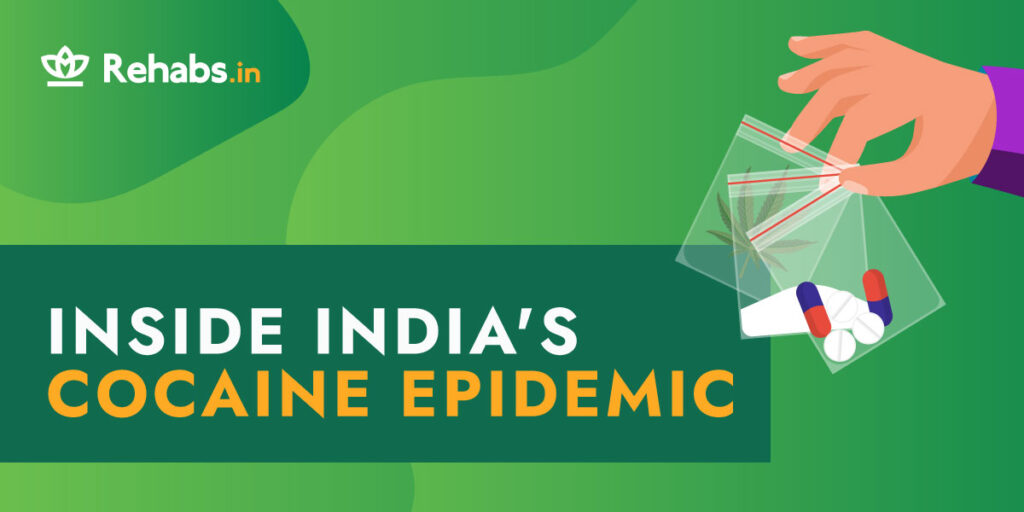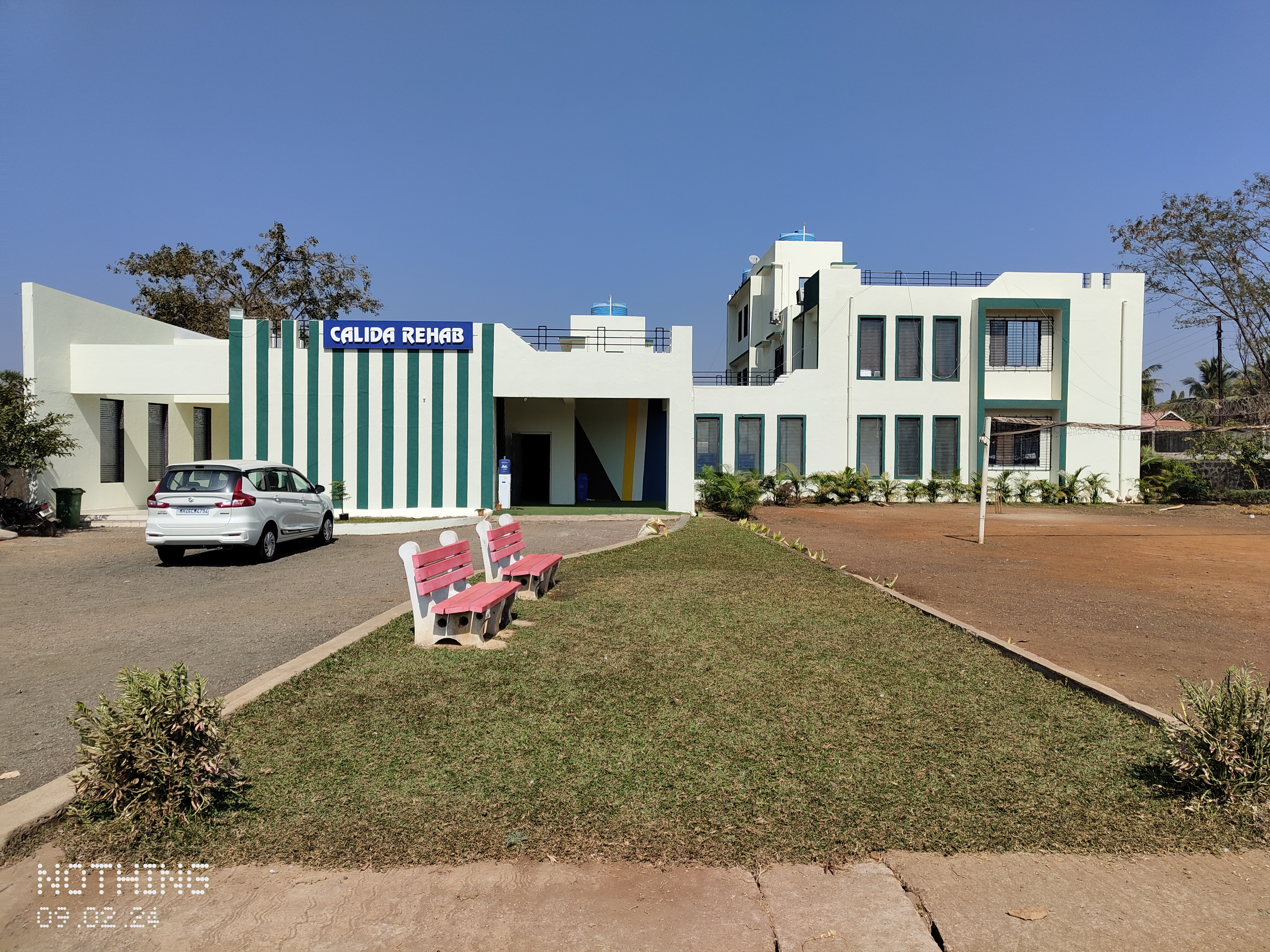Inside India’s cocaine epidemic

Inside India’s Cocaine Epidemic: Unveiling the Rising Tide
Cocaine, a powerful stimulant derived from the coca plant, has gained notoriety worldwide for its addictive properties and significant impact on individuals and communities. In India, recent reports from 2023 indicate a concerning trend, with approximately 10 lakh adult cocaine users reflecting a stark rise in drug use post-pandemic. This surge is echoed in cities like Bengaluru, where the number of narcotics cases booked more than doubled from 2019 to 2023, highlighting the pressing need for awareness and action in addressing substance abuse issues.
Introduction to the Cocaine Epidemic in India
The emergence and escalation of cocaine use in India are deeply intertwined with broader trends in drug consumption and trafficking. According to Sanjay Kumar Singh, the Deputy Director-General (Operations) at the Narcotics Control Bureau (NCB), the COVID-19 pandemic marked a turning point, leading to new strategies and tactics employed by traffickers to evade detection.
One such strategy was the utilisation of anonymous parcels, which gained popularity among illicit traffickers. This shift in tactics has contributed to a notable increase in drug use across the country. The impact of cocaine and other illicit drugs on India has been multifaceted. It has not only led to a rise in addiction rates and related health issues but has also fueled criminal activities, including organised crime and money laundering.
The economic burden of drug abuse, in terms of healthcare costs and lost productivity, has added strain to the country’s resources. Addressing the escalation of cocaine use in India requires a comprehensive approach that encompasses enforcement, prevention, and treatment measures to mitigate its adverse effects on individuals and society as a whole.
Socio-Economic Factors Fueling the Epidemic
Several socio-economic factors have contributed to the rise in cocaine usage, reflecting shifts in societal norms and economic structures. One significant factor is increased affluence, where individuals with higher disposable incomes may have greater access to luxury goods and experiences, including recreational drugs like cocaine. Globalisation has also played a role in facilitating the movement of goods, people, and ideas across borders, thereby increasing the availability and reach of illicit substances.
When A relocated to Mumbai as a budding Bollywood actor, it marked his entry into a realm of glamour, wealth, and extravagance. However, this transition also introduced him to a perilous journey of cocaine addiction. Reflecting on his experience in an interview, he remarked, “It’s a whole different world and lifestyle. After landing my first Bollywood role, I felt the pressure to blend in, so when my friends at a party indulged in cocaine, I followed suit.” Over the course of three years, this decision led him perilously close to death due to an overdose. “That incident served as a wake-up call. It was the first time I truly feared for my life.” A’s story is not unique; it mirrors a broader trend where India’s significant economic expansion has enticed a growing number of middle and upper-class individuals like Anshul to experiment with cocaine and other substances.
Urbanisation is another key factor, as cities often serve as hubs for drug distribution networks due to their dense populations and diverse socio-economic backgrounds. The anonymity and fast-paced lifestyle of urban areas can create an environment conducive to drug experimentation and usage. Additionally, the pressures and stresses associated with urban living, such as competition, job insecurity, and social isolation, may drive some individuals towards substance abuse as a coping mechanism.
Cultural influences and changing societal attitudes towards drug use have also contributed to the normalisation of drug consumption in certain circles. The portrayal of drug use in media and popular culture, coupled with reduced stigma in some contexts, can influence perceptions and behaviours related to substance abuse.
The Demographics of Cocaine Use in India
The demographics of people using cocaine in India reflect a diverse and widespread pattern of consumption. A study revealed that the drug was being used across the country by both males and females, as well as individuals from various religions and socio-economic backgrounds. The demographics of people using cocaine in India reveal a notable gender disparity, with a breakdown showing that male users represent 0.18% of the user base, while female users account for 0.01%.
In terms of age distribution, the study found that the largest numbers of drug abusers fell within the 31-40 age group, constituting 36.9% of the total, followed closely by the 21-30 years age group at 33.1%. There are also approximately 2 lakh users between the ages of 10-17, highlighting the concerning trend of substance abuse starting at younger ages in India.
Overall, these demographics underscore the widespread nature of cocaine use in India, cutting across gender, religion, and class lines, with a significant portion of users falling within the prime working-age groups and even among adolescents.
Health Implications of Cocaine Abuse
Cocaine usage can have profound short-term and long-term health effects, affecting both physical and mental well-being. In the short term, cocaine use leads to immediate, intense euphoria, increased energy, and heightened alertness. However, these effects are often followed by a crash characterised by fatigue, depression, and anxiety. Some of the short-term health effects of cocaine usage include:
- Cardiovascular Effects: Cocaine is a potent stimulant that can lead to increased heart rate, elevated blood pressure, and irregular heart rhythms (arrhythmias). This places significant stress on the cardiovascular system and increases the risk of heart attacks, strokes, and other cardiovascular complications.
- Respiratory Effects: Cocaine use can cause respiratory distress, including difficulty breathing, chest pain, and lung damage. Smoking cocaine (crack cocaine) can lead to respiratory infections, chronic cough, and lung disease.
- Neurological Effects: Cocaine affects the brain’s reward pathways, leading to intense cravings and addiction. Short-term neurological effects can include seizures, headaches, and strokes. Additionally, cocaine use can impair cognitive functions such as attention, memory, and decision-making.
- Gastrointestinal Effects: Cocaine use can lead to gastrointestinal complications such as abdominal pain, nausea, vomiting, and reduced appetite. Chronic cocaine use can cause severe damage to the digestive system.
- Psychological Effects: In the short term, cocaine can induce feelings of confidence, euphoria, and increased sociability. However, it can also trigger anxiety, paranoia, hallucinations, and aggressive behaviour. These psychological effects can contribute to risky behaviours and harm to oneself or others.
In the long term, chronic cocaine usage can have devastating health consequences:
- Addiction: Cocaine is highly addictive, leading to compulsive drug-seeking behaviours despite negative consequences. Addiction to cocaine can have profound social, occupational, and legal repercussions.
- Cardiovascular Complications: Long-term cocaine use significantly increases the risk of cardiovascular diseases such as heart attacks, hypertension, cardiomyopathy, and aortic dissection. These conditions can be life-threatening and require intensive medical intervention.
- Respiratory Problems: Chronic cocaine inhalation (smoking crack cocaine) can cause severe respiratory issues, including chronic bronchitis, asthma, and respiratory failure. These conditions can lead to long-term breathing difficulties and impaired lung function.
- Neurological Damage: Prolonged cocaine use can lead to structural changes in the brain, affecting neurotransmitter systems and cognitive functions. This can result in memory problems, concentration difficulties, mood disorders, and an increased risk of mental health conditions such as depression and anxiety disorders.
- Social and Economic Consequences: Cocaine addiction can have significant social and economic ramifications, including strained relationships, loss of employment, financial hardships, legal troubles, and involvement in criminal activities.
Cocaine usage can exacerbate existing mental health conditions such as depression, anxiety disorders, bipolar disorder, and schizophrenia. Cocaine-induced psychosis, characterised by hallucinations, delusions, and paranoia, is a serious mental health complication that can occur with heavy and prolonged cocaine use.
From a healthcare perspective, the strain caused by cocaine usage is substantial. Healthcare systems must address the acute medical emergencies associated with cocaine intoxication, such as cardiovascular emergencies, seizures, and respiratory distress. The long-term cocaine addiction treatment approaches include medical detoxification, behavioural therapies, counselling, and support services. The societal costs of treating cocaine-related health problems, along with the indirect costs such as productivity loss and criminal justice expenses, place a considerable burden on healthcare systems and society as a whole.
The Ripple Effect on Society and Crime
Let’s discuss how cocaine addiction can have far-reaching impacts on societal norms, family structures and crime rates, creating a complex web of social, economic, and public health challenges:
Societal norms: Cocaine addiction is often stigmatised, leading to discrimination against individuals with substance use disorders. This stigma can hinder access to treatment and support services, perpetuating the cycle of addiction. The prevalence of cocaine addiction can contribute to the normalisation of drug use within certain communities or social circles, influencing younger generations and perpetuating substance abuse behaviours.
Family Structures: Cocaine addiction can strain familial relationships, leading to conflicts, breakdowns in communication, and emotional distress within the family unit. Substance abuse can result in neglect of family responsibilities, including childcare, financial support, and household management. It may also increase the risk of domestic violence and child abuse within affected households.
Crime Rates: Cocaine addiction fuels demand for the drug, leading to increased drug trafficking activities. Trafficking organisations engage in illegal activities to smuggle, manufacture, and distribute cocaine, contributing to organised crime networks. Drug trafficking is often associated with violence, as rival gangs compete for control over lucrative drug markets. This can result in turf wars, armed conflicts, and increased levels of violence within communities.
Economic Impact: Cocaine addiction places a significant burden on healthcare systems due to the treatment of addiction-related health problems, including overdoses, cardiovascular complications, and mental health disorders. Substance abuse, including cocaine addiction, can lead to absenteeism, reduced productivity, and job instability, impacting economic productivity at individual and societal levels.
Law Enforcement and Policy Challenges
Law enforcement faces daunting challenges in combating cocaine trafficking and usage, primarily due to the intricacies of the global drug trade. Cocaine flows through complex supply chains that span multiple countries, often orchestrated by transnational organised crime syndicates with significant resources and expertise. These syndicates engage in diverse criminal activities, from money laundering to corruption and violence, further complicating law enforcement efforts.
There has been a notable increase in the utilisation of courier services for drug trafficking, facilitated by the anonymity these services provide. Efforts have been made to raise awareness among courier companies, urging them to maintain comprehensive records of both senders and recipients. Furthermore, there is a push for stricter measures, such as enforcing proper Know Your Customer (KYC) protocols and implementing OTP-based verification to ensure the identity of senders is verified and known.
Technological advancements, such as encrypted communication, also aid traffickers in evading detection and interception. Moreover, the infiltration of drug money into various levels of society presents challenges of corruption and bribery, hindering effective law enforcement strategies.
The evaluation of current drug policies reveals a multifaceted approach that combines supply reduction strategies, law enforcement tactics, prevention and treatment programs, harm reduction initiatives, and international cooperation. While supply reduction efforts, such as interdiction operations and border controls, disrupt trafficking networks, they struggle to keep pace with evolving smuggling techniques.
In India, there is an approximate treatment gap of 90% for Substance Use Disorders (SUDs). This significant gap in treatment options is linked to numerous health risks and imposes a substantial burden on public health systems due to the resultant health complications.
Initiatives for Prevention and Rehabilitation
Both government and non-governmental organisations (NGOs) in India have undertaken comprehensive initiatives to prevent cocaine use and support the rehabilitation of users. The government has implemented education campaigns focused on raising awareness about the dangers of cocaine addiction and promoting healthy lifestyles.
Treatment programs, including counselling, detoxification services, and rehabilitation centres, are provided through government-funded facilities. NGOs complement these efforts by offering community-based outreach programs, peer support groups, and counselling services tailored to the specific needs of cocaine users. Together, these initiatives aim to reduce drug abuse, provide support to individuals struggling with addiction, and promote a drug-free society.
International Collaboration in Tackling the Epidemic
International cooperation plays a crucial role in addressing the cocaine epidemic in India by fostering partnerships for drug interdiction and sharing best practices for rehabilitation. Collaborative efforts between Indian authorities and international counterparts enable the exchange of intelligence, expertise, and resources to combat drug trafficking networks and intercept illicit drug shipments.
International cooperation facilitates the adoption of effective strategies for drug demand reduction, rehabilitation, and harm reduction initiatives. This includes sharing knowledge about evidence-based treatment programs, counselling approaches, and peer support networks aimed at aiding individuals struggling with cocaine addiction. By working together across borders, countries can strengthen their responses to the cocaine epidemic, enhance law enforcement capabilities, and promote comprehensive solutions that address both the supply and demand sides of drug abuse.
Moving Forward: Strategies to Combat the Cocaine Epidemic
To effectively combat the cocaine epidemic in India, a holistic approach encompassing prevention, treatment, and law enforcement strategies is essential. Here are recommendations for comprehensive policies and strategies:
- Prevention Initiatives: Implement targeted education and awareness campaigns in schools, communities, and media platforms to educate the public about the dangers of cocaine use, addiction risks, and available support services.
- Treatment and Rehabilitation Services: Expand access to evidence-based treatment programs, including counselling, cognitive-behavioural therapy, medication-assisted treatment, and detoxification services for individuals with cocaine addiction.
- Law Enforcement and Drug Interdiction: Enhance coordination and collaboration among law enforcement agencies at local, regional, and national levels to target drug trafficking networks, dismantle organised crime syndicates, and disrupt supply chains of illicit drugs.
- Integrated Approach and Partnerships: Foster partnerships between government agencies, law enforcement, healthcare providers, NGOs, community organisations, and international stakeholders to develop and implement integrated strategies for combating the cocaine epidemic.
Conclusion
India’s cocaine epidemic is a multifaceted challenge that demands urgent attention and concerted action. With rising drug trafficking activities, increasing cocaine usage among various demographics, and significant gaps in prevention, treatment, and law enforcement, the need for a comprehensive response is paramount.
There is a critical need for heightened awareness campaigns, targeted education initiatives, expanded access to evidence-based treatment and rehabilitation services, strengthened law enforcement measures, and enhanced international cooperation to combat drug trafficking networks. A collaborative effort involving government agencies, law enforcement, healthcare providers, NGOs, communities, and international partners is crucial to effectively address the root causes of cocaine addiction, reduce demand, dismantle supply chains, and promote a drug-free society in India.
Sources:
Drug abuse as a seizure trigger. (n.d.). Epilepsy Foundation. https://www.epilepsy.com/what-is-epilepsy/seizure-triggers/drug-abuse
Drug Abuse Monitoring System. (n.d.). Drug Abuse Monitoring System – A profile of Treatment seekers. https://www.unodc.org/pdf/india/publications/dams_Monograph/09_results.pdf
Illegal drugs and heart disease. (2024, April 15). www.heart.org. https://www.heart.org/en/health-topics/consumer-healthcare/what-is-cardiovascular-disease/illegal-drugs-and-heart-disease
Kanathanda, M., & India, T. O. (2020, September 6). Cocaine use in Karnataka doubles in five years, Bengaluru new transit point. The Times of India. https://timesofindia.indiatimes.com/city/bengaluru/cocaine-use-in-state-doubles-in-5-yrs-bluru-new-transit-point/articleshow/77954524.cms
MAGNITUDE OF DRUG ABUSE IN THE COUNTRY. (n.d.). https://pib.gov.in/PressReleseDetailm.aspx?PRID=1911769
Mills, J. H. (2017). Decolonising drugs in Asia: the case of cocaine in colonial India. Third World Quarterly, 39(2), 218–231. https://doi.org/10.1080/01436597.2017.1357116
Morton, W. A. (1999). Cocaine and psychiatric symptoms. Primary Care Companion to CNS Disorders/the Primary Care Companion for CNS Disorders, 1(4). https://doi.org/10.4088/pcc.v01n0403
National Drug Dependence Treatment Centre (NDDTC) & All India Institute of Medical Sciences (AIIMS), New Delhi. (2019). Magnitude of Substance Use in India. In socialjustice.gov.in. MINISTRY OF SOCIAL JUSTICE AND EMPOWERMENT GOVERNMENT OF INDIA. https://socialjustice.gov.in/writereaddata/UploadFile/Survey%20Report.pdf
Parmar, A., Narasimha, V. L., & Nath, S. (2023). National Drug Laws, Policies, and Programs in India: A Narrative review. Indian Journal of Psychological Medicine, 46(1), 5–13. https://doi.org/10.1177/02537176231170534
Perper, J. A., & Van Thiel, D. H. (1992). Respiratory complications of cocaine abuse. In Recent developments in alcoholism (pp. 363–377). https://doi.org/10.1007/978-1-4899-1648-8_18
Reporter, G. S. (2017, October 6). India becomes cocaine trafficking centre as drugs follow rise of rich. The Guardian. https://www.theguardian.com/global-development-professionals-network/2015/oct/01/india-cocaine-trafficking-drugs-rich-economic-growth
StoryTailors. (2022, June 9). Around 100 million Indians consume drugs like cocaine and heroin, says narco top cop. CNBCTV18. https://www.cnbctv18.com/india/drug-abuse-among-indian-youth-higher-traffickers-using-anonymous-parcel-route-narco-top-cop-13770352.htm

















